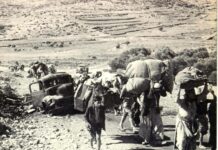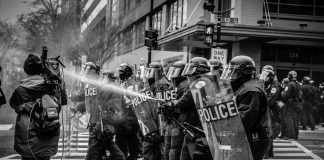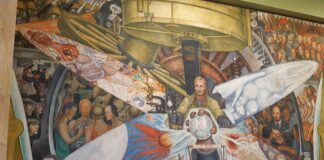
Socialistisk Biblioteks Tidslinje med links til begivenheder og personer i 1948.
Se også Index over personer, organisationer/partier og værker (som bøger, malerier, mm.), steder, begivenheder, mv., der er omtalt på hele Tidslinjen, titler og indhold på emnelisterne osv.
5. januar 1948
Udgivelsen af Kinsey-rapporten Sexual Behavior in the Human Male (Philadelphia, W.B. Saunders, 804 p.)
Se:
- The Kinsey Institute (Indiana University)
- The Kinsey Reports (Wikipedia.org)
Da Kinsey-rapporten kom til Danmark 1948. Af Kaj Erik Nielsen (Pan, nr.4, 1998; online på Internet Archive WayBackMachine)
Sex i USA. Af Tonny Vorm (Information, 20. januar 2005)
Who’s Afraid of Alfred Kinsey? By Robert Rose (PopMaters, 30 September 2005)
Sexual pioneer. By Joanne Laurier (World Socialist Web Site, 15 December 2004)
Kinsey: in defense of sex and science. By Helen Cantor (Workers Vanguard, No.839, 7 January 2005)
21. januar 1948
Ide-historikeren, professor Hans-Jørgen Schanz fødes i Sønderborg. (Dør i Århus 28. januar 2022, se denne dato).
30. januar 1948
Indiske frihedsleder Mahatma Gandhi myrdes.
Se på Socialistisk Bibliotek:
Tidslinjen 2. oktober 1869
11. februar 1948
Filminstruktøren Sergej Eisenstein dør i Moskva. (født 23. januar 1888 i Riga)
Se på Socialistisk Bibliotek:
Tidslinjen 21. december 1925 om Eisenstein og filmen “Panserkrydseren Potemkim”
25. februar 1948
Kommunistpartiet overtager magten i Tjekkoslovakiet.
Se:
- Østeuropa (Leksikon.org)
- Czechoslovak coup d’état of 1948 (Wikipedia.org)
Czechoslovakia 1948. By Joseph Grim Feinberg (Jacobin: Reason in Revolt, 13 March 2018). “Seventy years ago, a popular revolution swept the Communist Party to power in Czechoslovakia. It quickly proved itself to be a hidden coup.”
Eastern Europe after Second World War. By Chris Harman (Chapter I in: Class Struggles in Eastern Europe 1945-83, Pluto Press, 1983, p.15-41; online at Internet Archive). Scroll down to ‘The Prague Coup – Workers’ Uprising?’: “The Prague coup was not a ‘revolution from below’ but a police manoeuvre, accompanied by a carefully prepared display of popular support.”
Background of the coup: Stalinism in Czechoslovakia. By Ernest Erber (The New International, Vol.14, No.3, March 1948). “… the detailed study we have made of the Stalinist road to power in Czechoslovakia has great value in casting light upon the nature of Stalinism as a social, political and economic phenomenon.”
The triangle of forces: Notes on the Czech coup. By Hal Draper (New International, Vol.14, No.4, April 1948). “The Stalinist coup de force in Czechoslovakia has had a double impact. On the one hand, it has greatly sharpened the tension between Washington and Moscow and raised a new wave of war fears. On the other, it has posed new questions about the nature of Stalinism and its potentialities outside of Russia itself.”
On the Czechoslovakian coup: Theses on the nature of the Stalinist revolution. By Ernest Erber, Emanuel Garrett & Henry Judd (New International, Vol.14, No.5, July 1948). “The Stalinist coup was aimed at achieving a totalitarian state and all opposition to it, short of that by avowed fascists, was progressive.” See also Albert Gates: The nature of the Czech coup: Critique of the Erber-Garrett-Judd resolution (The New International, Vol.14, No.6, August 1948)
Se også:
Eastern Europe after Second World War. By Chris Harman (Chapter I in: Class Struggles in Eastern Europe 1945-83, Pluto Press, 1983, p.15-41; online at Internet Archive).
Stalin’s Satellites in Europe. By Ygael Gluckstein [i.e. Tony Cliff] (George Allen & Unwin, 1952). Only Part 1 online: ‘The economy of the Russian satellites’.
On the class nature of the ‘People’s Democracies’ (1950). By Tony Cliff (Reprinted in Duncan Hallas (ed.), The Fourth International, Stalinism and the Origins of the International Socialists, Pluto Press, 1971, p.10-64). See here chapter: ‘Czechoslovakia’.
Linkboxen Berlinmurens fald (Socialistisk Bibliotek).
1. april 1948
Færøernes hjemmestyrelov træder i kraft.
Se:
- Færøerne (Leksikon.org)
- Hjemmestyre (Wikipedia.dk)
3. april 1948
Den amerikanske Marshallplan for genopbygning af Vesteuropa vedtages.
Se:
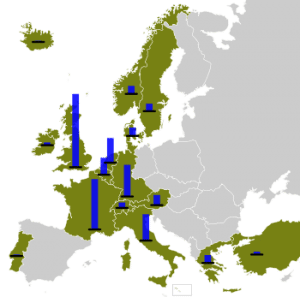
- Marshallplanen (Leksikon.org)
- Marshallplanen (Denstoredanske.dk)
- Marshall Plan (Wikipedia.org)
Økonomiske vanskeligheder og Marshall-hjælp. Af Søren Hein Rasmussen og Peter Yding Brunbech (Danmarkshistorien.dk, 6. maj 2015)
Marshall-planen (European Recovery Program). Af Mads Einar Nielsen (Danmarkshistorien.dk, 24. februar 2012)
Kapitalismens genopbygning: Marshallhjælpen – hvad gik den ud på? Af Anders Hagström (Socialistisk Information, 16. oktober 2016)
Why the Marshall Plan? By Éric Toussaint (International Viewpoint, 25 August 2014). “This bilateral policy aimed to buttress the capitalist Western block spearheaded by Washington against the Eastern bloc dominated by the USSR.”
The enduring mystique of the Marshall Plan. By William Blum (Dissident Voice, March 3, 2011). “Let’s have a look at the Marshall Plan outside the official and popular versions.”
Can the Marshall Plan succeed? Analysis of the post-war crisis of capitalism. By Henry Judd (New International, Vol.14, No.7, September 1948)
The Marshall Plan, Part I: Its history and development. By Michel Pablo + Part II: An analysis of its aims and limitations (Fourth International, Vol.9, No.2, March-April + No.3, May 1948).
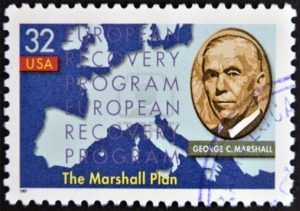
4. april 1948
Den vestlige militærpakt NATO grundlægges, da The North Atlantic Treaty Organization / Atlantpagten – Den nordatlantiske Traktatorganisation underskrives i Washinton, USA.
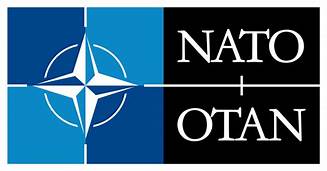
Se på Socialistisk Bibliotek:
Linkboxen: NATO – 70 års trussel
7. april 1948
WHO – Verdenssundhedsorganisationen – grundlægges som FN-organisation.
9. april 1948
Israelsk terrorangreb på den palæstinensiske landsby Deir Jassin.
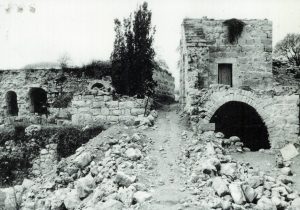
Se:
- Irgun Zwai Leumi (Leksikon.org)
- Deir Yassin massacre (Wikipedia.org)
Deir Yassin Remembered (site). Deir Yassin Remembered was founded to do justice to the victims of the Deir Yassin Massacre: “Early in the morning of April 9, 1948, commandos of the Irgun (headed by Menachem Begin) and the Stern Gang attacked Deir Yassin, a village with about 750 Palestinian residents … In all over 100 men, women, and children were systematically murdered.”
Israel’s massacre at Deir Yassin. By Nick Clark (Socialist Worker, Issue 2597, 24 March 2018). “That massacre has since come to symbolise all the crimes committed against the Palestinians in 1948.”
Remembering Deir Yassin. By Daniel McGowan (The Electronic Intifada, 26 September 2003). “Today, an extraordinary event will take place in Geneva, New York: the dedication of the first US memorial to the victims of the Deir Yassin massacre.”
Se også på Socialistisk Bibliotek:
Emnelisten: Israel 1948 og Nakbaen (katastrofen)
Emneoversigten: Palæstina / Israel
14. maj 1948
Kolonistaten Israel oprettes.
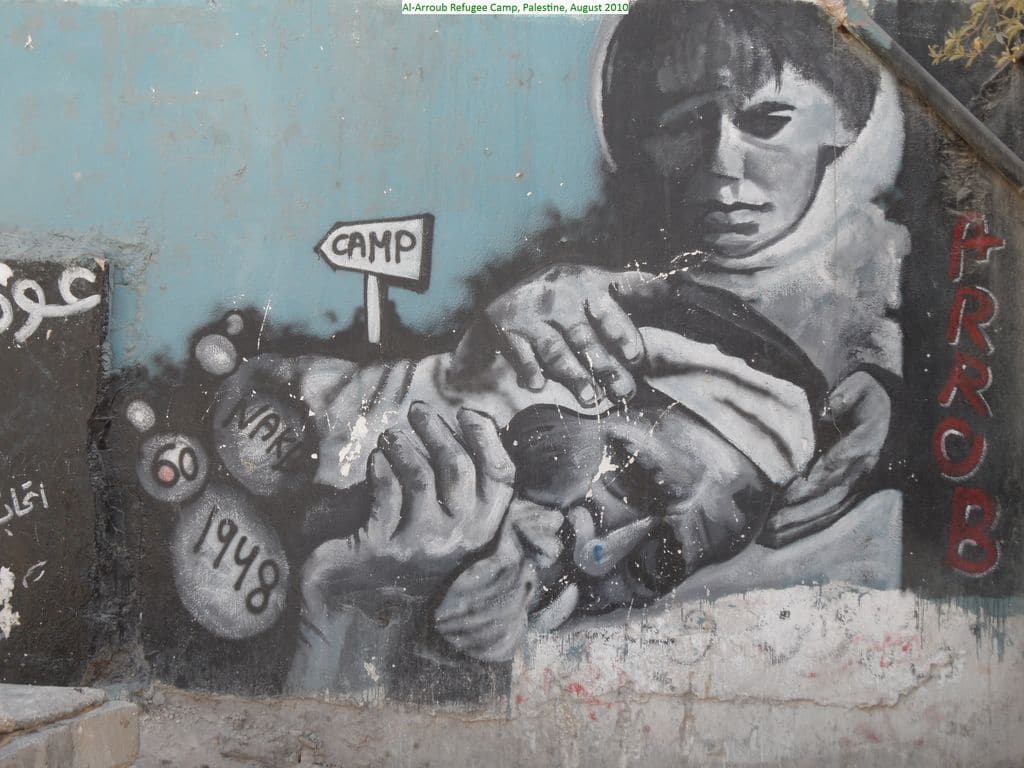
Se:
- Palæstina (Leksikon.org)
Se også på Socialistisk Bibliotek:
Emnelisten: Zionisme – Antizionisme: Historien om racisme og etnisk fordrivelse
Emnelisten: Israel 1948 og Nakbaen (katastrofen)
Emneoversigten: Palæstina / Israel

24. juni 1948
Berlin-blokaden begynder. Blokaden hæves 12. maj 1949.
Se:
Berlinproblemet (Leksikon.org)
Berlinblokaden (Denstoredanske.dk)
Blokaden af Berlin (Wikipedia.dk)
28. juni 1948
Jugoslaviens kommunistiske parti bryder med Sovjetunionen under Stalin, der direkte opfordrer til opstand mod den “reaktionære titoistiske klike”.
11. august 1948
Anne Grete Holmsgaard fødes.
MF for VS 1979–1986 og SF (2002-2011).
Se:
- Anne Grethe Holmsgaard (Wikipedia.dk)
29. august 1948
Sangerinden Anisette (Hansen) fødes i København. Sanger i Savage Rose.
Se:
- Anisette Hansen (Dansk Kvindebiografisk Leksikon)
- Savage Rose (site; online på Internet Archive)
Se også på Socialistisk Bibliotek:
- Personlisten: Thomas Koppel
5. oktober 1948
Gerry Adam, leder af irske partiet Sinn Feins, fødes i Belfast.
Se:
- Adams, Gerry (Leksikon.org)
- Gerry Adams (Wikipedia.org)
Se også på Socialistisk Bibliotek:
- Tidslinjen: 28. november 1905, om Sinn Féin.
8. november 1948
Kunstnergruppen COBRA dannes i Paris.
Se:
Se også på Socialistisk Bibliotek:
Tidslinjen: 3. marts 1914, om Asger Jorn.
25. november 1948
Den italienske neo-realismens hovedværk Cykeltyven/ Ladri di Biciclette, instr. af Vittorio De Sica, har premiere i Milano. Filmen fik Oscar i 1950. “Vittorio de Sicas ’Cykeltyven’ er den neorealistiske klassiker over dem alle. Handlingen udspiller sig i Rom i efterkrigstidens fattigdom, arbejdsløshed og sociale nød … Den satte standarden for socialt engageret filmkunst i årtier – og er stadig at finde højt på mange lister over verdens bedste film.”
Se:
- Cykeltyven (Wikipedia.dk)
- Bicycle Thieves (Wikipedia.org)
- Cykeltyven (Det Danske Filminstitut)
- Cykeltyven – et undervisningsmateriale Af Patrik Sjöberg(Filmcentralen.dk)
Cykeltyven, Vittorio og neorealismen. Af Mikael Strandbech (Arbejderen.dk, 6. december 2008). “Cykeltyven og en anden af Vittorios De Sicas film Umberto D fra 1952 bliver regnet som hovedværker inden for neorealismen, som vil vise hverdagen og hverdagslivet.”
Bicycle Thieves. Essay by Brian Eggert (Deep Focus Review, April 1, 2017). “Underneath the film’s surface rests an incredibly multifaceted application of aesthetic and formal innovation, commentary on the oppression of working classes, specific sociopolitical conditions at play in Italy at the time …”
Neorealism: We Were Not Just Bicycle Thieves – a documentary on Italian cinema. By Richard Phillips (World Socialist Web Site, 19 January 2016). “… provides a basic overview of neo-realism, Italy’s most influential cinematic movement … The documentary’s title is a reference to De Sica’s Bicycle Thieves, the director’s 1948 masterpiece about the desperate efforts of a worker, and his seven-year-old son, to find and recover a stolen bicycle.”
The film that changed my life: Ken Loach (The Guardian, 16 May 2010). “I saw The Bicycle Thieves in the late 1950s, when I was in my late teens. I’d left school, was heading towards an unsuccessful year as an actor and theatre director and the film had a big effect on me.”
Great movie: The Bicycle Thieves (Robertebert.com, March 19, 1999). “The Bicycle Thief is so well-entrenched as an official masterpiece that it is a little startling to visit it again after many years and realize that it is still alive and has strength and freshness.”
Online at YouTube.com, English Subtitles (1:30:40 hour)
10. december 1948
Verdenserklæringen om Menneskerettighederne blev vedtaget på FN’s tredje generalforsamling den 10. december 1948.
Se:
- FN’s Menneskerettighedssystem (Institut for Menneskerettigheder)
- Om menneskerettigheder (Institut for Menneskerettigheder). Historisk gennemgang m. links m lovgivning og konventioner. Se også deres Useful web sites.
- Menneskerettigheder (Leksikon.org)
- Universal Declaration of Human Rights + Human rights (Wikipedia.org)
Menneserettighederne fylder 70 år (Amnesty International, nr. 4, december 2018, tema side 10- PDF-fil). Links bl.a. til de originale 30 artikler fra 1948.
What’s wrong with Rights? By Will Searby (RS21, 6 May 2019). Review of Radha D’Souza, What’s Wrong with Rights?: Social Movements, Law and Liberal Imaginations (Pluto Press, 2018, 272 p.)
The politics of human rights. By David Camfield (New Socialist, April 4, 2015). “Defending human rights is necessary. But championing human rights is a completely inadequate way of responding to the biggest crises of our times …”
Reclaiming human rights. By Robin Blackburn (New Left Review, Issue 69, May-June 2011). Review of Samuel Moyn, The Last Utopia: Human Rights in History (Harvard University Press, 2010, 352 p.)
Se også på Socialistisk Bibliotek:
Tidslinjen: 26. august 1789, om den Franske Menneskeretttighedserklæring
19. december 1848
Den engelske forfatter Emily Brontë dør. (Født 30. juli 1818, Se denne)
















